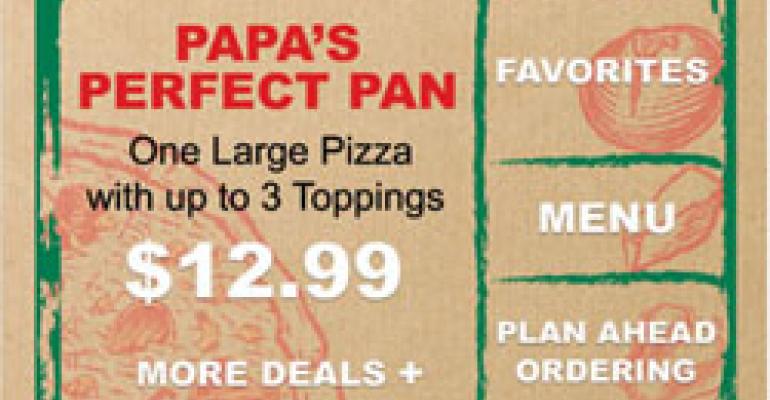As restaurant chains continue their never-ending battle to send marketing messages more effectively to targeted consumers and make it easier for them to buy products, online “widgets” are emerging as the next weapon of choice.
Pizza Hut and Papa John’s Pizza have both introduced widgets, which are computer applications with simple graphical interfaces, such as those that allow consumers to order online without using chains’ websites.
It’s all about speed and convenience, and marketers are slowly turning to widgets to deliver that. A survey by online research company eMarketer found that U.S. companies will spend $40 million this year to create, promote and distribute widgets, up from $15 million in 2007. Widgets are used by 69 million adults and 15 million teens who use social networks, the company said.
Pizza Hut and Papa John’s are pioneering the use of widgets to snag more consumers with one-click ordering and instant notification of localized deals. Pizza Hut’s widget is called “Pizza Hut Shortcut.” Consumers register online and view a demonstration, then download the application.
Within three weeks of launching the widget, “tens of thousands” of consumers had downloaded it, said Bernard Acoca, director of digital marketing. A “what’s new” tab gives regular updates on new products, and in a few weeks a new feature will sound an audible alert about the latest coupons that consumers can download to the widget, he said.
“Our consumers are always asking for easier and faster ways to order,” Acoca said.
Pizza Hut, a division of Louisville, Ky.-based Yum! Brands Inc. with more than 6,200 U.S. units, first introduced online ordering in 1994 and made it available nationally last year. The chain’s “Pizza Playlist” allows online customers to create and store up to four favorite orders.
The biggest online orderers are younger consumers, who’ve grown up with new technology, but older consumers also want to order online, and “we’re trying to accommodate that with the Shortcut,” Acoca said.
Widgets are a versatile marketing tool, said Jim Kargman, president of Chicago-based QuikOrder Inc., which developed the Pizza Hut Shortcut. “We can create a complete environment experience for [consumers],” he said. “With a widget, we can take them where we want to take them, with their cooperation.”
Papa John’s “myPapa” is a set of widgets that stream exclusive product discounts, personalized favorite pizzas and incentives to consumers’ computer desktops. The widgets also can be embedded on customers’ social-network pages, blogs and start pages. Customers who use the widget receive as many as 12 custom discounts and product offers a day that are restaurant-specific. MyPapa users also can access features not available through the chain’s usual online and e-mail channels. The chain is “absolutely confident” myPapa will generate incremental orders, said Bob Ford, director of online marketing for the Louisville, Ky.-based system of nearly 3,000 U.S. units.
However, “there’s a large percentage of people who wouldn’t think of ordering online,” Ford conceded. “If we can expose them to the widget, we can be top of mind.”
Since Pizza Hut went national with online ordering, Acoca said, “our online business has grown sixfold, and it’s not unrealistic to anticipate that half of our business will come from online in five years time.”
Ford predicted that online ordering “will one day be the majority ordering process.”
Widgets also can keep consumers from knowing about rival chains’ better offers, said Kathy Sharpe of Sharpe Partners, a New York digital marketing and media firm. Because orders are made directly through the widget, users are less likely to surf the Web and find a better bargain, she said. Chains also can analyze widget use to target more enticing deals specifically to locales with weaker sales, Sharpe added.

